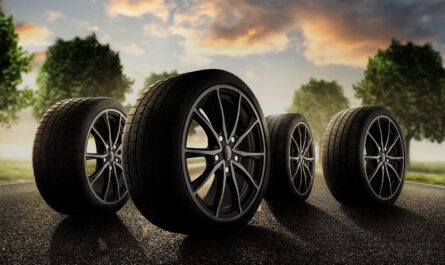Types of Car Racks
There are several main types of luggage rack to choose from when deciding how to carry extra gear on your vehicle. The best option depends on what you need to transport and your vehicle type.
Roof Racks: Car Racks are one of the most common and versatile options. They attach directly to the roof of your vehicle via mounting points or bars. This allows you to carry larger and bulkier items securely on top of your vehicle. A wide variety of roof racks, baskets, and containers are compatible with most vehicle models. Roof racks do decrease fuel efficiency slightly and can be more difficult to load and unload from versus other rack styles.
Hitch Mounted Racks: For cars, crossovers, SUVs and trucks with trailer hitches, a hitch mounted rack provides a rear-loading option. These racks sit higher than roof racks for improved visibility and headroom clearances when loading. Hitch racks allow you to still use your rear hatch or trunk space while transporting additional gear. Downsides include blocking rearview camera views on some vehicles and increased risk of damage from low-hanging obstacles.
Trunk Mounted Racks: For smaller vehicles like sedans and hatchbacks that lack a trailer hitch or roof rack mounting points, a trunk rack provides a lower-profile loading option. These straps or mounts securely to the rear of the vehicle without protruding too far. Capacity is more limited versus roof or hitch racks, but they minimize aerodynamic drag. Check tight fitment within the trunk before purchasing.
Pickup Bed Racks: Customized pickup bed racks are ideal for truck owners seeking versatile, secure storage in their bed. Horizontal bars create dedicated spaces for various equipment while respecting overall bed height. Ladders, bikes, kayaks and more can all fit safely above the truck bed walls.
Material Types
Common materials impact the weight, strength and durability of different car rack styles. Choosing the right material is an important factor.
Aluminum: Lightweight yet durable, aluminum is a popular frame material for roof and hitch racks. It won’t rust like steel but can dent more easily. Anodized coatings add corrosion protection.
Steel: The most affordable option, steel racks are sturdy yet prone to rust without protective coatings. Galvanized and powder-coated finishes help steel racks last.
Plastic: Light and affordable plastic or composite racks have minimal corrosion risks. However, they may not withstand heavy loads as well as metal racks over time.
Specialty Materials: For high-end racks, materials like carbon fiber blend lightweight strengths with luxury aesthetics. Others use non-rust aluminum alloys.
Load Capacity and Car Racks
Knowing your total load capacity is essential to choosing the right car rack. Check your owner’s manual for your vehicle’s maximum roof weight limit. This will differ based on make, model and year.
Hitch racks have their own weight ratings as well, usually listed on the manufacturer’s specifications. A Class I hitch can hold up to 200 lbs, Class II 300 lbs, and Class III 500 lbs or more. Ensure your vehicle hitch is rated appropriately.
For roof or hitch racks, consider the weight of the rack itself plus any cargo. Leave adequate safety margin below weight limits. Overloading risks damage to your vehicle or rack.
Wind Noise and Aerodynamics
Any rack mounted to the exterior of a moving vehicle will impact wind noise and aerodynamics to some degree. Low-profile trunk racks minimize drag best, while roof cargo creates more wind resistance.
Using properly sized and sealed racks, as well as lockdown mounts and pads help cut wind noise. Driving slower on the highway when heavily loaded also reduces noise levels versus high speeds. Aerodynamic boxes or fairings over roof cargo improve stability versus exposed gear.
Security
Protection from theft is vital when transporting expensive equipment like bikes, boards or tools. Many roof and hitch racks come with locks to secure mounted gear. Choose high-security locks with thick shackles.
Cables threaded through frames provide an extra layer versus simple padlocks. Removing valuable items when parked reduces temptation. Store numbers make pursuing stolen goods easier. Home or business monitoring also deters theft when loading/unloading.
Regular Maintenance
Like any vehicle accessory used long-term outdoors, racks need occasional upkeep to prevent avoidable problems down the road. Check tightness of all bolts and mounts periodically as vibration can loosen components over time.
Inspect vehicle attachment points for stress cracks or corrosion that warrants professional repair. Touch up any scratches or chips in finishes that expose base metals to the elements. Store racks clean and dry when not in use between seasons.
With so many rack options on the market, prioritizing your cargo needs, vehicle type and intended use helps narrow the field. Ensure any rack you choose operates safely and legally within your vehicle’s rated capacities. Regular maintenance keeps your rack investment protecting gear reliably for as long as possible.
*Note:
1. Source: Coherent Market Insights, Public Source, Desk Research
2. We have leveraged AI tools to mine information and compile it.
About Author - Ravina Pandya
Ravina Pandya,a content writer, has a strong foothold in the market research industry. She specializes in writing well-researched articles from different industries, including food and beverages, information and technology, healthcare, chemicals and materials, etc. With an MBA in E-commerce, she has expertise in SEO-optimized content that resonates with industry professionals. LinkedIn Profile



